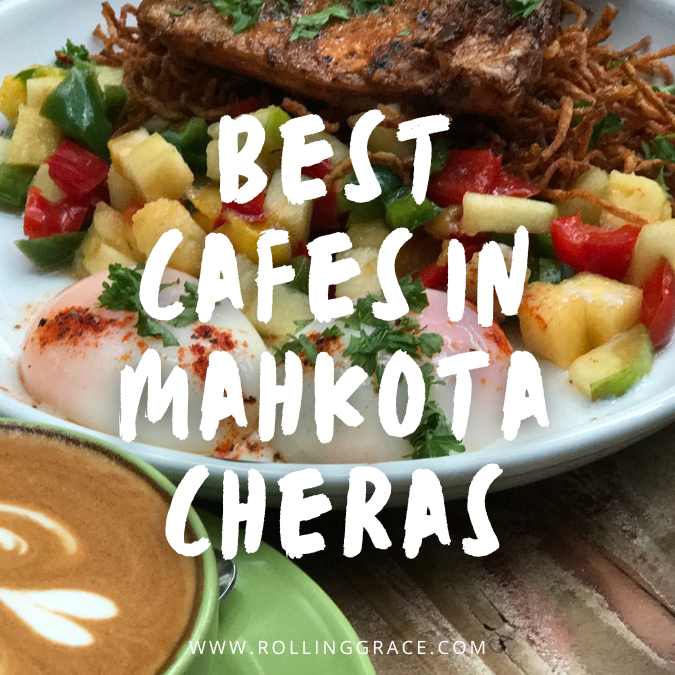 |
| 8 Awesome & Healthy Alternatives to White Rice |
8 Awesome & Healthy Alternatives to White Rice
Brown, Red & Black Rice
To produce white rice, its bran and germ needed to be removed. This results in a lower level of nutrients as compared to other rice varieties. Bran, which is present in other types minimally-processed rice, is rich in dietary fiber and minerals such as potassium, calcium, iron and magnesium, and is also known to be high in antioxidants. These components are crucial in enhancing the immune system while lowering the risk of diabetes, improving cholesterol level while fighting cancer and inflammation.
 |
| Brown, red or black rice is a healthy replacement for white rice |
Couscous
Despite how it looks, couscous is actually a type of pasta and not grains. It is prepared using steamed semolina and wheat flour, and has long been a staple in North African cooking. Instant versions found on supermarket shelves are pre-steamed and can easily be hydrated through a quick boil. Couscous is lower in calories and takes lesser time to cook as compared to white rice.
 |
| Couscous contains lower calories compared to white rice |
Broccoli & Cauliflower Rice
Derived from plants, broccoli and cauliflower rice is grain-free and gluten-free, while having a high level of vitamins such as vitamin C and K. They also provide anti-inflammatory, digestive and antioxidant health benefits that your body will appreciate. To prepare, simply blend the vegetables in a food processor or you can do so manually using a grater.
 |
| Broccoli and cauliflower rice make great substitutes for white rice |
Red, Black & White Quinoa
If you're looking for a versatile and nutritious addition to your meals, look no further than quinoa. This ancient grain is a great source of starch and adds a delightful chewiness and nutty flavour to any dish. But that's not all quinoa has to offer.
Packed with protein and a complete source of amino acids, it's a great option for vegetarians and vegans looking to increase their protein intake. In addition to its protein content, quinoa is also abundant in fibre, riboflavin, and iron, all of which are crucial for maintaining good health. Fibre helps to regulate digestion and lower cholesterol levels, while riboflavin plays a key role in energy production and iron is essential for healthy blood flow.
Not only does quinoa taste great, but it's also a powerhouse of nutrition that can help you feel your best. Whether you're using it as a base for salads, a side dish for your main course, or even in baking, quinoa is a versatile and delicious ingredient that can elevate any meal.
 |
| Red, black and white quinoa is vegan and has a delicious nutty flavor. |
Oats
Oats are not just a breakfast staple, they are also a powerhouse of nutrition that can benefit your overall health in numerous ways. As a type of cereal grain, oats are commonly consumed as rolled oats or oatmeal. They are incredibly nutritious and are made up of a variety of essential nutrients, including carbohydrates, protein, dietary fibre, fats, and beta-glucans. In fact, oats are one of the most nutrient-dense grains available, making them an excellent addition to any diet.
One of the most well-known benefits of oats is their cholesterol-lowering properties. Beta-glucans, a type of soluble fibre found in oats, has been shown to reduce LDL (bad) cholesterol levels by trapping it in the digestive system and preventing it from being absorbed into the bloodstream. This, in turn, reduces the risk of heart-related diseases.
In addition to their cholesterol-lowering properties, oats are also a great source of protein, making them an ideal food for vegetarians and vegans. They are also rich in dietary fibre, which helps to keep you feeling full for longer and aids in digestion. And let's not forget about their delicious taste and versatility in the kitchen. Oats can be used in a variety of dishes, from breakfast bowls and granola bars to savoury dishes like oat-crusted chicken.
 |
| Oats are known to effectively lower cholesterol |
Millet
These small but mighty grains are a rich source of magnesium, which is essential for many bodily functions, including regulating blood sugar levels. In fact, research has shown that millets can help fight type-2 diabetes by increasing the production of carbohydrate-digesting enzymes, which helps to regulate blood sugar levels.
But that's not all millets have to offer. They are also rich in insoluble fibre, which can help to lower the risk of gallstone formation. Insoluble fibre helps to move food through the digestive system, preventing the build-up of bile and reducing the risk of gallstones. This makes millets a great choice for those looking to improve their digestive health.
There are several different types of millets available, each with their own unique flavour and texture. Pearl millet is the most widely cultivated type and is commonly used to make flatbreads and porridge. Finger millet has a nutty flavour and is often used in baked goods or as a base for porridge. Foxtail millet is similar in texture to rice and is a great substitute for rice in dishes like pilaf or risotto. Proso millet has a mild flavour and is often used in soups and stews.
Barley
Barley charges your body with vitamins and minerals such as niacin and selenium, which are essential for the cardiovascular system. By consuming these grains, you are also protecting your liver and intestines thanks to the zinc, calcium, phosphorous and copper they contain. Although they are more commonly consumed as desserts or sides, they can also be turned into a savory meal when prepared with the right ingredients.
Bulgur Wheat
Widely known as cracked wheat, bulgur wheat is an excellent source of plant-based protein. In just a one-cup serving, it provides over 25% of the daily fiber requirement needed by your body. It also supplies numerous important plant-based phyto-nutrients such as lignans and plant stanols that lower inflammations and free radical damages.
 |
| Bulgur wheat |
It's a common misconception that taking care of your body is something that should be done only when you're young. However, the truth is that it's never too late to start looking after your body. Taking care of your health and wellbeing is a lifelong journey that requires dedication and effort.
One of the easiest ways to start is by making small changes to your diet. For instance, swapping white rice with healthy and delicious alternatives can be a great way to kickstart your journey towards a healthier lifestyle. There are a plethora of options available such as brown rice, quinoa, cauliflower rice, and wild rice, to name a few. Not only are these alternatives packed with nutrients, but they're also incredibly versatile and can be used in a variety of dishes.
So, why not take the first step towards a healthier you by making this simple yet impactful change in your diet? Your body will thank you for it!

















great sharing, I just know that Millet can be use as a carbohydrate too. good post
ReplyDelete